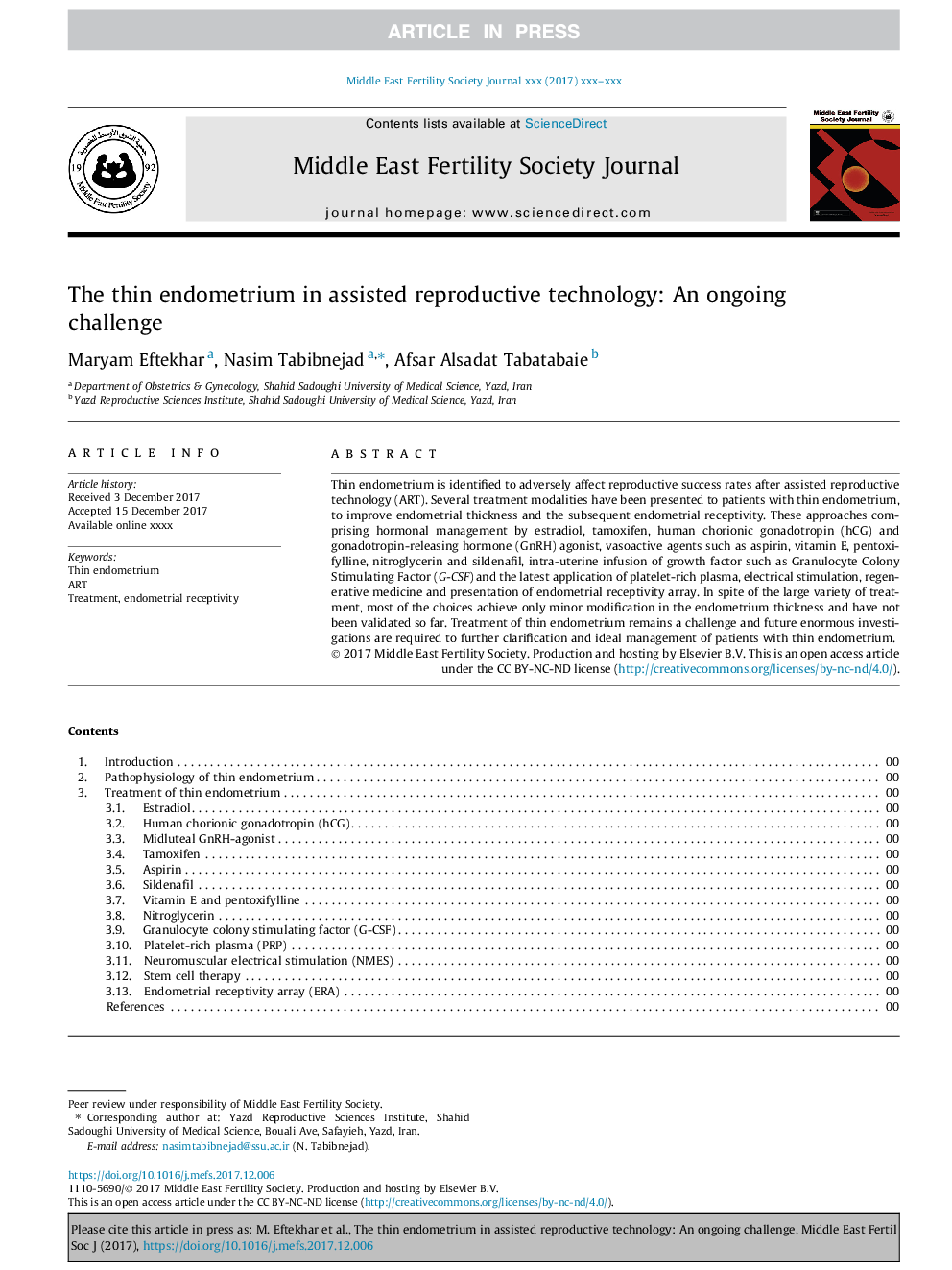| Article ID | Journal | Published Year | Pages | File Type |
|---|---|---|---|---|
| 8783203 | Middle East Fertility Society Journal | 2018 | 7 Pages |
Abstract
Thin endometrium is identified to adversely affect reproductive success rates after assisted reproductive technology (ART). Several treatment modalities have been presented to patients with thin endometrium, to improve endometrial thickness and the subsequent endometrial receptivity. These approaches comprising hormonal management by estradiol, tamoxifen, human chorionic gonadotropin (hCG) and gonadotropin-releasing hormone (GnRH) agonist, vasoactive agents such as aspirin, vitamin E, pentoxifylline, nitroglycerin and sildenafil, intra-uterine infusion of growth factor such as Granulocyte Colony Stimulating Factor (G-CSF) and the latest application of platelet-rich plasma, electrical stimulation, regenerative medicine and presentation of endometrial receptivity array. In spite of the large variety of treatment, most of the choices achieve only minor modification in the endometrium thickness and have not been validated so far. Treatment of thin endometrium remains a challenge and future enormous investigations are required to further clarification and ideal management of patients with thin endometrium.
Keywords
Related Topics
Health Sciences
Medicine and Dentistry
Obstetrics, Gynecology and Women's Health
Authors
Maryam Eftekhar, Nasim Tabibnejad, Afsar Alsadat Tabatabaie,
